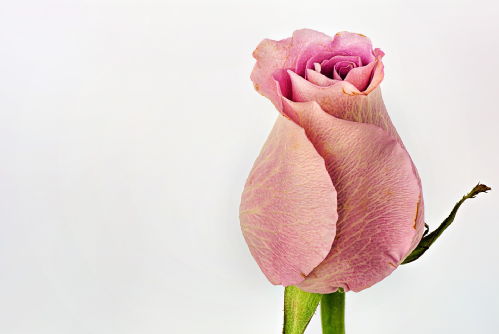What is Love?

On St Valentine’s Day, modern tradition dictates that we really ought to treat our loved one to a romantic meal, a bunch of flowers or watch a ‘rom-com’. At the very least we should buy a card. But that is modern tradition. What was love before it became a supermarket meal deal for two?
When romance was born
People in the Middle Ages knew a thing or two about how to do romantic cliché well, says Dr Emma Campbell, an expert in medieval French literature, from the School of Modern Languages and Cultures:
To be honest, I’m not much of a fan of Valentine’s Day, which seems to be a cliché-ridden festival designed to get people to spend money. However, as a medievalist, I have to admit to a professional association with the discourse of romantic love which happens around this time of year.

Much of the language and imagery of love we are still using today is derived in some form from the tradition of so-called ‘courtly love’ developed in Europe during this period. The Middle Ages itself took inspiration from Greek and Roman Antiquity, which provided medieval authors with a number of important ideas and associations like the heart as a container of emotions; the notion of love at first sight; the connection between love and sicknessor suffering. You know that emoji with the lovehearts for eyes? It has this tradition to thank for its existence.
Medieval conceptions of love are still perceptible in our contemporary notions of romance. They were developed most extensively and influentially in Occitan (through troubadour poetry) and in French (through lyric poetry and a genre of writing called ‘romance’ that now gives its name to the kind of romantic love identified with it). Although the term ‘courtly love’ is often used as a shorthand for this discourse of love, the term itself is in fact a nineteenth-century coinage. Medieval poets tend instead to simply talk about amour (love) or fin’ amor, the latter being a concept focused more on refinement of feeling than on the courtly setting in which love might be expressed.
Medieval poets – experts in the refinement of feeling and its expression in a form that was at once innovative and traditional – may be able to assist those still looking for an alternative, but suitably sincere, Valentine’s message. Here are some quotations from a trio of French and Occitan poets which you might like to offer to your partner, your lover/s, or yourself on Valentine’s Day, or on any other day of the year:
Twelfth-century female writer Marie de France describes how Tristan can’t live without his beloved Queen Yseut, just like the honeysuckle can’t live once separated from the hazel, a description that culminates in Tristan’s beautifully succinct secret message to the queen:
‘Bele amie, si est de nus:
Ne vus senz mei ne jeo senz vus’
[Beloved, so it is with us: you cannot be without me, nor I without you]
Nobleman and poet Thibaut de Champagne manages to compensate for overweening self-pity by elegantly comparing himself to a unicorn:
Ausi conme unicorne sui
Qui s'esbahit en regardant
Quant la pucele va mirant.
Tant est liee de son ennui,
Pasmee chiet en son giron;
Lors l'ocit on en traïson.
Et moi ont mort d'autel semblant
Amors et ma dame, por voir,
Mon cuer ont, n'en puis point ravoir.
[I am like the unicorn, stunned by contemplation of the maiden that enchants it, so joyful at its displeasure that it falls in a faint into her lap and is treacherously killed. And, in truth, I am similarly killed by Love and my lady, who have my heart, which cannot be freed.]
Finally, troubadour poet Bernart de Ventadorn offers a lifeline for all those lovers dealing with freezing February temperatures:
‘Tant ai al cor d’amor
De joi e de doussor,
Que l’iverns me sembla flor
E la neus verdura’
[I have such love, joy, and sweetness in my heart that the winter seems like a flower to me and the snow like greenery]
Ballads versus bank balances

Love was celebrated through the arts in Shakespeare’s age, but marriage was very much a business arrangement. Emeritus Professor Bernard Capp from the Department of History explains:
The English in Tudor and Stuart times had complicated and contradictory ideas about romantic love. They flocked to see plays about it, and devoured ballads and romances. But in the eyes of the aristocracy, gentry, wealthy merchants and professional families, love should play no part when it came to the choice of a marriage partner. They saw marriage as about property, status and connection, with love, if it came later, as merely a bonus. Young people, of course, did not always agree. And in poorer families, young people usually left home as adolescents, and had far greater freedom to fall in love and marry without parental oversight. Ballads were aimed especially at the young, and dealt with love in all its forms, with stories of faithful lovers, love betrayed, and love triumphing over dangers and obstacles.
Samuel Pepys, the famous diarist, amassed a huge collection of such ballads. Pepys himself had fallen in love and married a beautiful, spirited but penniless girl of fifteen. Their marriage proved both passionate and stormy, troubled by Pepys’s roving eye and jealousies on each side. In this period, married people had Valentines too, and would wear a ‘favour’ as a token. As Pepys knew, that might create more tensions.
Wealthy parents lived in fear of their sons and daughters falling in love and ‘throwing themselves away’ on someone unsuitable. One of the most poignant love-stories of the seventeenth century is the romantic liaison between Dorothy Osborne and William Temple, the future diplomat, conducted by letter under the nose of Dorothy’s disapproving family. Dorothy’s wonderful letters survive. William’s do not; Dorothy had to burn them to stop them falling into the hands of her watchful brother Henry. Henry was determined to break the liaison, and paraded before her a succession of prospective husbands he considered far more suitable. There were as many twists and turns in the story as in any play on the London stage, but love eventually proved triumphant. Dorothy loved reading romances, and she lived one too.
Love in a custodial climate
Prison was a place of close confinement and surveillance in the nineteenth and early twentieth centuries. However, some of the men and women incarcerated within found ways to communicate with each other and form bonds, however fleeting, as a means of circumventing this routine of strict discipline and limited social interaction. Dr Rachel Bennett, from the Department of History and research fellow for the Wellcome Trust-funded project "Prisoners, Medical Care and Entitlement to Health in England and Ireland, 1850-2000", explains:
When reminiscing on his time as the governor of Coldbath Fields prison, George Chesterton spoke of a “startling” but “well-planned system” whereby male and female prisoners were able to meet daily on a roof that ran longitudinally over both the male and female portions of the prison. Upon learning of the time and location of the rendezvous, Chesterton appeared on the scene to catch the culprits. He recalled that the men fled in haste back through an iron grate they had used to access the roof, but he caught Mary Barry and another woman descending from a trap door which opened from the female side of the prison. Needless to say, Chesterton was not impressed by such a breech in the strict separation of the sexes and took steps to close off this unlawful meeting point.
In his 1884 Memorials of Millbank Major Arthur Griffiths, a military officer and later a prison administrator, spoke of discovering an intrigue between the women who worked in the prison’s laundry and certain male prisoners. In the prison laundry it was the practice that a female prisoner, known as the ‘kitter’, would make up bundles of clothes for the male prisoners. On one occasion John Davidson, a prisoner from Glasgow, inserted a leaf from a prayer book, one of the only books allowed in the prison, on which he had written that he hoped all the women in the prison were well. Ann Kinnear, who was also from Scotland, knew of John and reportedly described him as “a very nice young man”.
Although it appears that they did not meet in person, their acquaintance developed further in the following weeks. Short notes passed between the two of them written with the blue ink made of the blue-stone used for washing and they were able to exchange tokens of affection. Ann made John a heart from the grey worsted flannel of the prison clothes and she also sent him a lock of her hair. Keen to facilitate communication between other male and female prisoners, John acted as something of a go-between and promised to help other prisoners to find sweethearts. However, John and Ann’s clandestine prison flirtation was cut short when one of the wardswomen discovered some of the letters and John’s prison sentence subsequently expired and he was released. It is not known if Ann and John found each other again outside of the prison.
A modern romance – from ancient Greece
Forget all the ballads, poems and gushing sentiment says Dr Michael Scott from the Department of Classics and Ancient History. Ancient Greece told of a very modern concept:
My favourite romantic story from ancient Greek myth? Well, it's not a story of love as such, but more a wish for what love might be.
Odysseus – the hero of Homer's Odyssey – is away for ten years fighting at Troy and ten years getting home. His wife, Penelope has not only waited faithfully for 20 years, but fought off suitors determined to claim her hand and Odysseus' property and land in the meantime.
While on his travels, Odysseus meets a royal family with a young princess and offers her this wish (and kind of advice) on what her husband and her marriage might be like. He hopes that she and her future husband enjoy, what in ancient Greek is called, 'homophrosune'.
It's hard to translate, but it means something along the lines of 'like-mindedness' – not being carbon copies of one another, not always agreeing, but sharing a similar outlook on life and goals for living it. Odysseus believed that homophrosune was at the heart of a good, happy and fulfilling relationship. So I can only wish everyone homophrosune in their relationships this Valentine’s Day.
Terms for republishing
The text in this article is licensed under a Creative Commons Attribution 4.0 International License (CC BY 4.0).
Share


